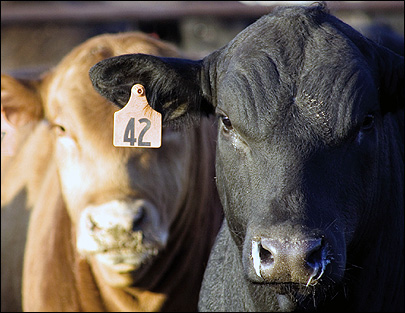
Agricultural News
R-Calf Claims Credit for Making Animal Disease Traceback Rule Less Onerous
Sun, 23 Dec 2012 19:59:44 CST
 On Dec. 28, 2012, the U.S. Department of Agriculture (USDA) will publish its final national animal identification rule, known as the Traceability for Livestock Moving Interstate (final rule). The final rule will take effect 60 days later, on Feb. 26, 2013.
On Dec. 28, 2012, the U.S. Department of Agriculture (USDA) will publish its final national animal identification rule, known as the Traceability for Livestock Moving Interstate (final rule). The final rule will take effect 60 days later, on Feb. 26, 2013.
"The final rule is far less onerous when compared to what the government has been pushing for years: premises registration, mandatory electronic eartags, centralized database of producer information, inclusion of all cattle regardless of age, and the removal of hot-iron brands as official identification devices, " said R-CALF USA Animal ID Committee Chair Kenny Fox.
R-CALF USA's membership took an uncompromising position against the USDA's early attempts to implement the final rule's precursor - the previously proposed National Animal Identification System or NAIS - and successfully defeated USDA's efforts to require independent cattle producers to register their farms and ranches as official "premises" and to identify every animal with a costly electronic ear tag.
Agriculture Secretary Tom Vilsack announced the death of NAIS in early 2010, citing widespread opposition from independent cattle producers and the need to reverse producer mistrust for the USDA as grounds for his decision.
Early in the controversy over NAIS, R-CALF USA in 2009 provided USDA with an 8-point alternative to improve animal disease traceability. That plan called for the restoration of the identification components of the nation's preexisting brucellosis eradication program, which used a metal eartag to trace breeding-aged livestock.
In 2011, however, USDA proposed a rule to allow the brucellosis-type eartag, but it also attempted to include cattle of all ages, such as those younger cattle shipped to feedlots or to a meatpacker, and it removed the hot-iron brand from USDA's list of official animal identification devices.
R-CALF USA and its membership called foul.
"We viewed USDA's proposed rule as a broken promise," said Fox adding, "Our membership immediately rallied to denounce USDA's plan to delist the hot-iron brand and to add feeder cattle to any new rule."
In the final rule, feeder cattle are no longer included, meaning only cattle 18 months of age or older that are shipped across state lines will be required to be identified after February 26. The final rule makes exceptions for rodeo and show cattle and sexually intact dairy cattle, which will be subject to identification requirements regardless of their age.
In addition, the final rule restores the hot-iron brand as an official identification device, though it makes its use contingent upon the approval of both the shipping and receiving state. The final rule also allows for the continued use of backtags for cattle destined for slaughter.
"The final rule looks more like the sensible rules that some states have already adopted - such as South Dakota's rule that subjects only older cattle to identification requirements - and less like USDA's previous plans to impose unworkable regulations on independent cattle producers," said Fox.
"The fact that some states already have sensible rules shows that the federal government's involvement in animal identification is really unnecessary," he added.
Fox said he remains concerned about the contingency associated with hot-iron brands, particularly since the final rule effectively demotes the hot-iron brand as a less acceptable means of identifying cattle than is a government eartag. He also cautioned that USDA intends to undertake yet another rulemaking in the near future to impose identification requirements on feeder cattle.
"But, for this round, at least, our efforts have clearly minimized the huge burden the government has tried for years to place on independent cattle producers," Fox concluded.
WebReadyTM Powered by WireReady® NSI
Top Agricultural News
More Headlines...



















